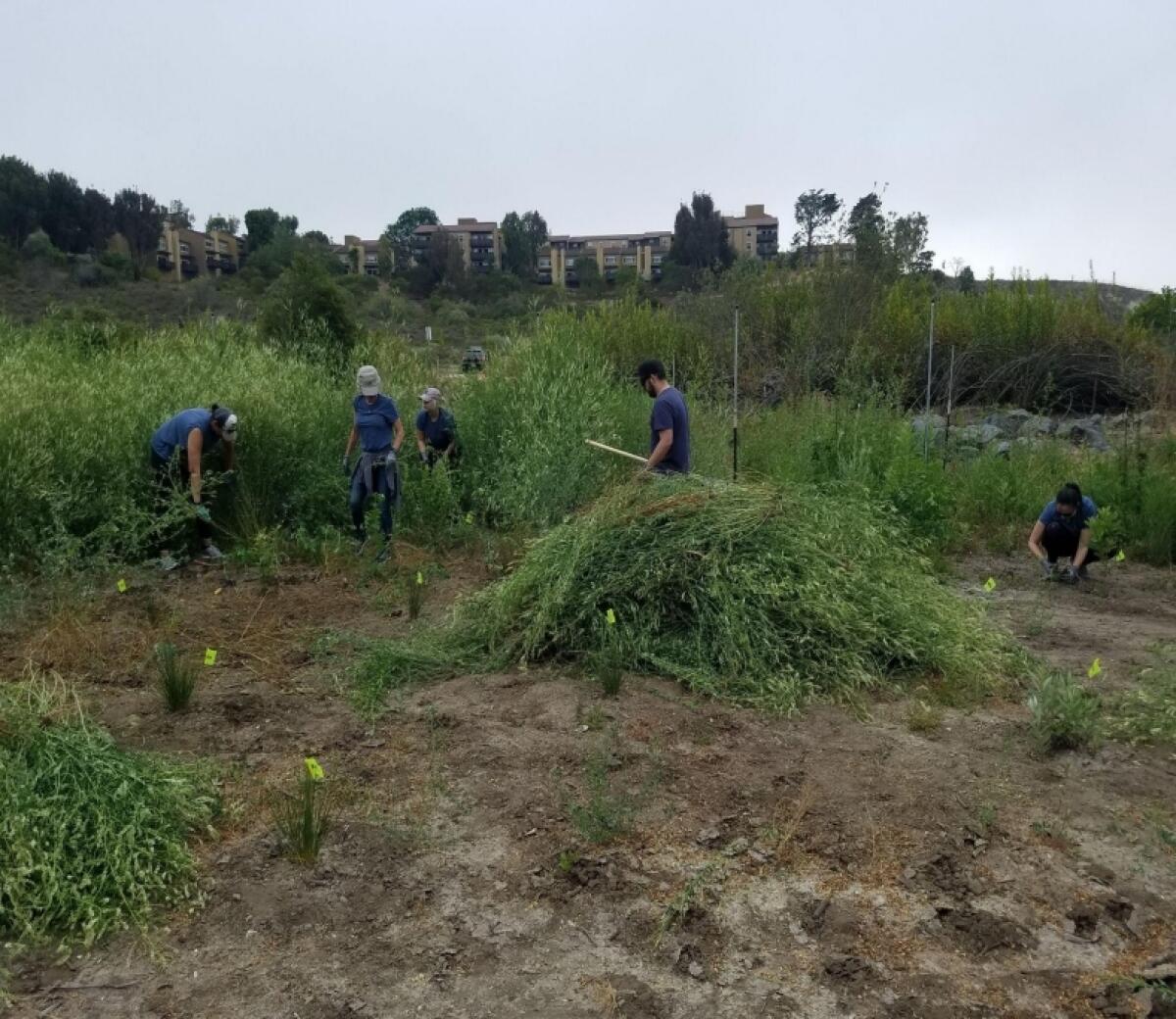Newport Beach, Newport Bay Conservancy look ahead to Big Canyon restoration project

Big Canyon Nature Park in Newport Beach is a place to recreate: kayaking, walking, bird-watching, hiking. But for environmentalists and city staff, it’s the site of a decades-long restoration project nearing its final phase.
Big Canyon is one of several large tributaries to upper Newport Bay. Roughly 45 acres of it is designated as Big Canyon Nature Park and is owned by the city of Newport Beach while the lower 15 acres are owned by the California Fish and Wildlife Department and lie within the Upper Newport Bay State Ecological Reserve, according to the Newport Bay Conservancy, a nonprofit that works to preserve and protect the bay through education, restoration and advocacy.
Discussion of restoring Big Canyon, which has long been impacted by human activity and development as Orange County grew, started in 2002, according to project manager and Newport Beach assistant city engineer Bob Stein, but nothing came of it until about 2015.
“That’s when we looked at the project in three phases. The most important phase is Phase III. There’s a big pond with a big mosquito problem,” Stein said, adding that the pond is one of the largest breeding grounds for mosquitos in Orange County. “But it didn’t make sense to restore that area before the two upstream areas first because all that run-off and invasive seeds would all go downstream.”

That led to Phase I, which cost roughly $1.6 million and recently concluded its monitoring period. That phase addressed roughly 6 acres of the park and focused on the rehabilitation of the creek that runs through it and riparian restoration. Urban runoff was diverted to a water treatment center.
Phase II was completed in 2021, at a similar cost. It involved the removal of invasive Brazilian pepper trees.
In a move that will save the city money, the City Council on Tuesday approved a professional services agreement with the Newport Bay Conservancy for monitoring that phase, instead of contracting with an outside landscaping firm to oversee it.
“What we’re doing is making sure we address any invasives that enter the area and making sure the seedlings and materials that we put there are taking root,” said public works director Dave Webb. “The agreement was ... that the Newport Bay Conservancy would fund half of the maintenance period and the city would fund the other half.
“They’ve completed theirs and we’re coming into the second half. The conservancy’s done such a good job and are so familiar with the project already. We got bids off of landscaping, but [the Conservancy is comprised of] a lot of volunteer folks. It made financial sense, planning and continuation sense. They’re already there doing the work, so they should do it for another 2½ years.”

Newport Bay Conservancy restoration manager Alys Arenas said the organization has led smaller community restoration work over the decades it has been in existence. Designing the last phase, which will restore the salt marsh habitats in Big Canyon, was about 60% as of Thursday, Arenas said, and Stein estimated it will cost about $4 million.
“We’re planning 14 acres of restoration,” Arenas said. “Right now, we have funding from the Ocean Protection Council to plan and design. [We’re] submitting permits by the end of this year for the implementation of the project. Assuming we get all our permits and funding in place, we could start as early as fall 2023. This is a unique opportunity to create wetland habitat.”
Arenas said the state removed wetlands as it developed, and few remain between Santa Barbara and the Mexican border.
“It’s an opportunity to bring back those wetlands, and also the design is created in such a way that we’re grading, ...creating a minimal slope in the topography so that we can plan to include high, mid and lower marsh species,” said Arenas. “As sea levels rise, that area is going to be able to adapt to that water level. It’s one of those climate resilience projects, if you will. This is an extension of that creek [from Phase I].
“We have homes and structures we need to protect, but we also live in such a space where those local neighbors have this open space. Orange County has this open space, so [we’re] trying to maintain biodiversity for humans and wildlife,” said Arenas. “Without intervention, we’ll lose salt marsh habitats. As sea levels rise, we’re predicted to lose more, and so pushing into the canyon is a unique opportunity to have that habitat not be lost.
“You’re protecting species that are supported by that specific habitat. You can think of it as you’re saving wetland habitats. There’s benefits: they’re buffers, clean our water, they’re a migratory bird stop for birds and a nursery for fish. A lot of people depend on fish for food, and there are a lot of benefits to people and recreationally.”
All the latest on Orange County from Orange County.
Get our free TimesOC newsletter.
You may occasionally receive promotional content from the Daily Pilot.




